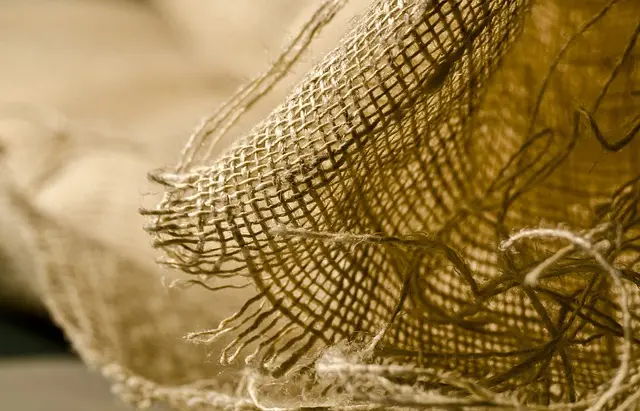Muscle soreness, known as delayed onset muscle soreness (DOMS), can be alleviated through various strategies, with interest growing in the use of lotus flower dried kratom extract, a natural remedy derived from the Mitragyna speciosa tree. This extract contains alkaloids like mitraphylline and 7-hydroxymitragynine, which may offer analgesic effects by interacting with opioid receptors. Users often report that it helps manage pain levels effectively, potentially due to its anti-inflammatory properties. However, the efficacy and long-term implications of kratom use are subjects that require more scientific research. It's important for individuals to consult healthcare professionals before using lotus flower dried kratom, given its complex regulatory status, potential for interactions with other substances or medications, and the need for safe usage guidelines. Proper dosage, strain selection, and adherence to safety protocols are essential to maximize benefits while minimizing risks. Regular monitoring of health is recommended to ensure that the use of this natural remedy remains positive and does not lead to negative health outcomes.
Muscle soreness can be a persistent impediment to an active lifestyle, often leaving individuals seeking effective and natural relief options. Lotus Flower Dried Kratom Extract has emerged as a potential remedy, offering promising benefits for muscle recovery. This article delves into the mechanisms behind muscle soreness, the therapeutic properties of Lotus Flower Dried Kratom Extract, and its application in alleviating discomfort. We will explore how this natural substance can be a valuable addition to one’s wellness regimen, accompanied by safety considerations for responsible use. Discover the role of Lotus Flower Dried Kratom Extract in facilitating muscle soreness relief and how it may enhance your recovery process.
- Understanding Muscle Soreness and the Role of Lotus Flower Dried Kratom Extract
- Effective Application of Lotus Flower Dried Kratom for Soreness Relief
- Safety Considerations and Responsible Use of Lotus Flower Dried Kratom for Muscle Recovery
Understanding Muscle Soreness and the Role of Lotus Flower Dried Kratom Extract

Muscle soreness, often characterized by discomfort or pain in the muscular tissue, can result from intense physical activity, overuse, or injury. This condition is commonly referred to as delayed onset muscle soreness (DOMS) and is a natural response of the body to repair and strengthen the affected muscles. Understanding the underlying mechanisms of muscle soreness is crucial for developing effective relief strategies. One such strategy that has gained attention is the use of lotus flower dried kratom extract, derived from the leaves of the Mitragyna speciosa tree native to Southeast Asia. The alkaloids present in this extract, chiefly mitraphylline and 7-hydroxymitragynine, are believed to interact with the body’s opioid receptors, potentially providing analgesic effects that can help alleviate muscle soreness. Users often report that lotus flower dried kratom extract aids in managing pain levels, allowing for more comfortable recovery and continued physical activity. It is important to note that while anecdotal evidence and some scientific research support its use, further studies are necessary to fully understand the efficacy and long-term effects of kratom for muscle soreness relief. Those considering kratom as a part of their pain management regimen should do so under informed guidance due to its complex legal status and potential for interaction with other substances or medications.
Effective Application of Lotus Flower Dried Kratom for Soreness Relief

When exploring natural remedies for muscle soreness, the effective application of lotus flower dried kratom has garnered attention for its potential relief properties. This specific strain, derived from the Mitragyna speciosa tree, is renowned for its alkaloid content, which includes mitraphylline and 7-hydroxymitragynine, among others. These compounds are believed to interact with the body’s opioid receptors, providing analgesic effects that can help alleviate discomfort associated with muscle soreness. Users often report a reduction in pain levels when incorporating lotus flower dried kratom into their wellness routine, attributing this to its soothing and anti-inflammatory qualities.
For those seeking relief from muscle soreness without the side effects commonly associated with pharmaceutical options, lotus flower dried kratom presents a compelling alternative. It is important to note that while many users report positive outcomes, individual experiences can vary. The proper dosage and strain selection are critical for optimal results, as different strains may yield different effects. Additionally, it is advisable to consult with a healthcare provider before integrating lotus flower dried kratom into any treatment plan, especially if one has underlying health conditions or is taking other medications. By following recommended usage guidelines and maintaining proper hydration and nutrition, individuals can safely explore the benefits of this natural remedy for muscle soreness relief.
Safety Considerations and Responsible Use of Lotus Flower Dried Kratom for Muscle Recovery

When incorporating lotus flower dried kratom into a muscle recovery regimen, it’s crucial to approach its use with caution and understanding. The Mitragyna speciosa plant, commonly known as kratom, has been traditionally used in certain cultures for its potential health benefits, including relief from muscle soreness. However, due to the potent alkaloids it contains, such as mitraphylline and 7-hydroxymitragynine, safety considerations are paramount. Users should start with a low dosage to gauge their individual response and avoid adverse effects. It’s also advisable to consult with a healthcare professional before integrating kratom into any recovery protocol, especially if one has pre-existing health conditions or is taking other medications.
Responsible use of lotus flower dried kratom for muscle recovery involves strict adherence to dosing guidelines and frequency of use. Overuse can lead to tolerance and dependence, which may necessitate a gradual reduction in intake to prevent withdrawal symptoms. Additionally, the quality and purity of kratom products can vary significantly between suppliers, so it’s essential to procure kratom from reputable sources to minimize the risk of contamination or misrepresentation of the product’s potency. Regular monitoring of one’s physical and psychological well-being is necessary to ensure that kratom use remains beneficial and does not lead to adverse health outcomes. By prioritizing safety and responsible use, individuals can explore the potential muscle recovery benefits of lotus flower dried kratom while mitigating associated risks.
In conclusion, muscle soreness can be a significant hindrance to one’s physical activities and overall well-being. The lotus flower dried kratom extract has emerged as a promising natural alternative for relief from muscle soreness. Its role in alleviating discomfort, as detailed in the article, is rooted in its unique alkaloid composition, which may interact with the body’s opioid receptors to produce analgesic effects. Users are advised to apply this extract judiciously within recommended guidelines to ensure safe and effective muscle recovery. As with any health-related application, individual responses can vary, thus personal experimentation with appropriate dosing should be conducted with caution and ideally under the guidance of a healthcare professional. By understanding its mechanisms and employing it responsibly, individuals may find lotus flower dried kratom to be a valuable addition to their muscle soreness relief regimen.






